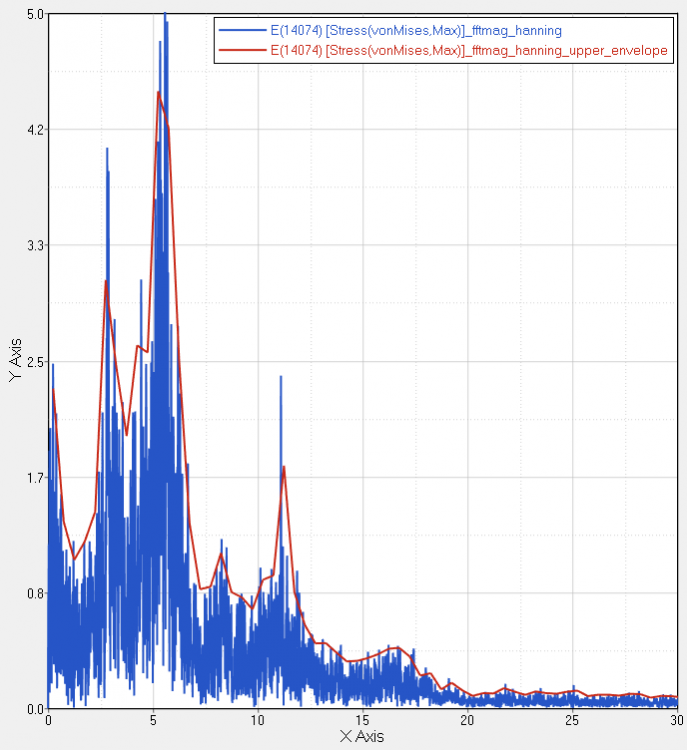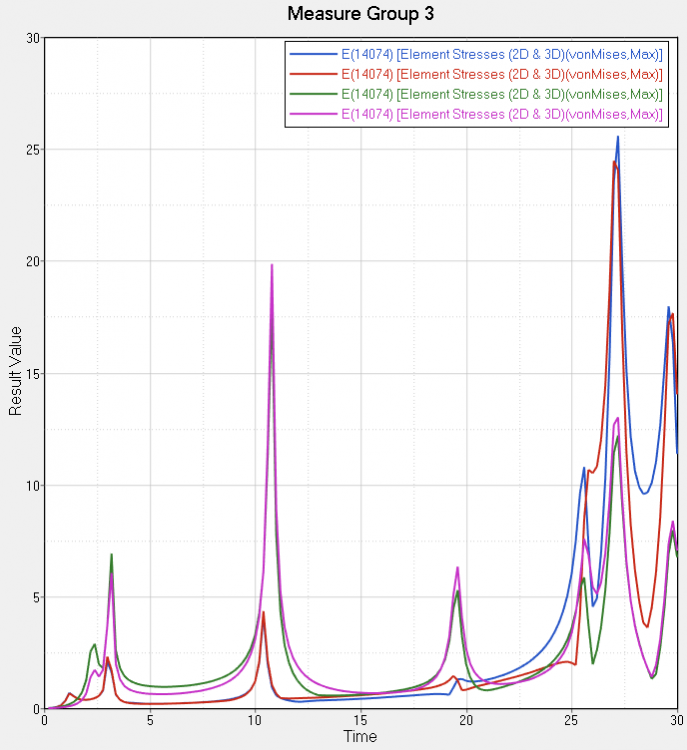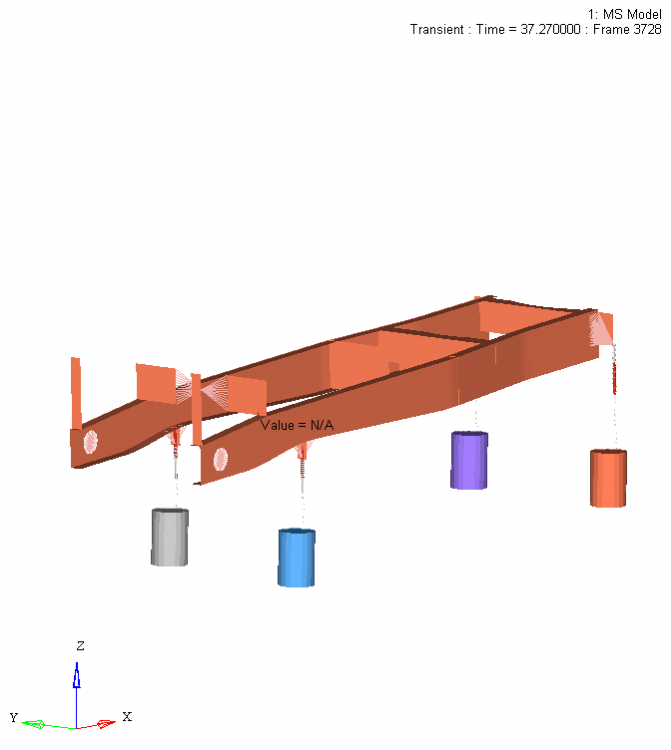Hello,
Currently I'm comparing a multi body simulation in motionview versus a random vibration analysis with optistruct for a simple chassis.
- The chassis is suspended at 4 points to the road. The suspension is modelled as a 1D spring-damper system and the wheel/tire as a 1D spring. Both in optistruct and motionview.
- Based on ISO8608 random road profiles are generated, which are used as inputs in the MBD-model. The ISO8608 PSD is used as input for the random vibration analysis in optistruct.
- The MBD model is placed on 4 shakers to which these road profiles are applied.
- For the optistruct model the 4 road points are excited seperately with a unit displacement in the frequency range 0,2-30 Hz with steps of 0,2. After which the random vibration is executed with the defined PSD.
To compare both results I converted the stress over time results from the MBD model in hyperview to stress over frequency by means of a FFT. The absolute stress results should not be comparable between both models, I should however see peaks at the same frequencies. However, clearly some peaks are missing around 5 Hz in the random vibration model, since no resonance seems to occur in at this frequency.
Now I believe I hit a theoretical limitation, but I wanted to verify if I did not make a obvious modelling error. Hence, why I am asking the question here.
Thus, does anyone have an explanation for the missing peaks in the random vibration analysis?
<?xml version="1.0" encoding="UTF-8"?> <?xml version="1.0" encoding="UTF-8"?>
<?xml version="1.0" encoding="UTF-8"?>
<?xml version="1.0" encoding="UTF-8"?>
<?xml version="1.0" encoding="UTF-8"?>